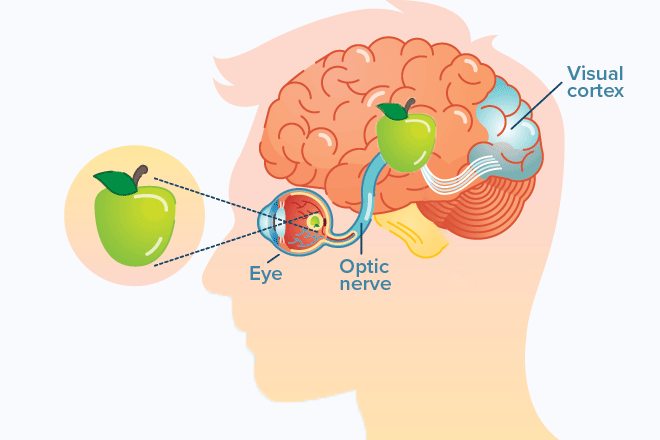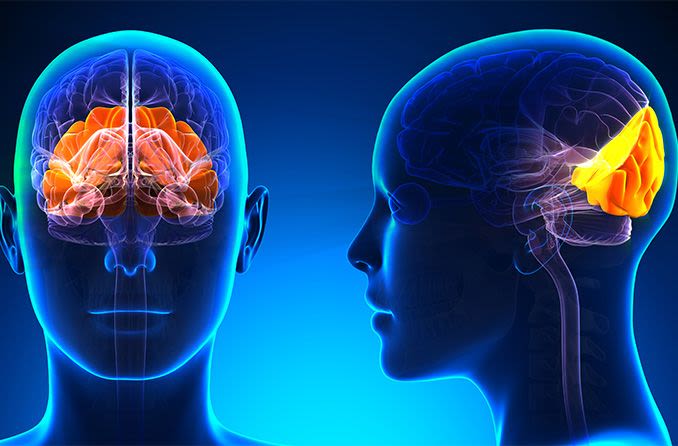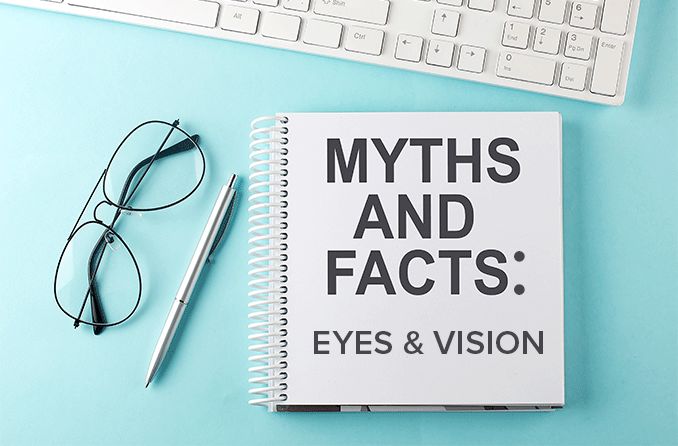What part of the brain controls vision?
The brain consists of four main segments called lobes. The frontal lobe up front, the parietal lobe on top, the temporal lobe on bottom and the occipital lobe pulling up the rear. All of our senses, thoughts and actions start in one of these lobes.
Most visual functions are controlled in the occipital lobe, a small section of the brain near the back of the skull. But processing eyesight is no simple task, so other parts of the brain have to pitch in too.
The occipital lobe, the vision center
The occipital lobe is solely responsible for observing and processing the raw image “data” sent from the outside world through the eyes.
For that reason, injuries or illnesses that affect the occipital lobe can result in different levels of visual disturbances or even blindness.
SEE RELATED: Does losing your vision make your other senses stronger?
The parietal and temporal lobes
We can’t talk about the occipital lobe without giving a little credit to these two. While the occipital lobe carries most of the visual burden, it’s the parietal and temporal lobes that help us make sense of what we’re seeing.
The parietal lobe plays a big role in visuospatial cognition, our ability to recognize and adapt to the physical space around us. This includes abilities like depth perception , navigation and movement.
When you want to change the channel on TV, you’re first using the occipital lobe to see the remote. But the parietal lobe’s visuospatial recognition is used to gauge how much distance is between you and the remote — an important detail once you decide to reach for it.
The temporal lobe controls memory; it assigns meaning to the images we see. After the occipital lobe registers the image of the TV remote, structures in the temporal lobe subconsciously remind us that the remote is used to change the channel, that it needs to be pointed at the TV, and which button we need to press to get to the channel we’re seeking.
The frontal lobe is usually not considered to be directly involved with vision, but scientists don’t think it should be left out completely. According to the Georgia Institute of Technology , new research actually suggests it might play a role in vision after all.
Functional MRIs of the brain showed the frontal cortex (part of the frontal lobe) light up during specialized vision tests, attributing the brain’s focusing ability to this previously disregarded lobe. The frontal cortex ensures your mental focus is on the correct object, out of the dozens or more of other things that may be within your field of view at any given moment.
READ NEXT: Synesthesia and Akinetopsia
How the eyes communicate with the brain
When we decide to look at something, a brainstem structure called the pons is called into action. It controls eye movement, constantly telling our eye muscles to move toward the correct stimulus of light (the object we want to look at).
When light enters the eye through the pupil , it strikes photoreceptor cells in the retina called rods and cones. Rod cells are responsible for peripheral vision and night vision, while cone cells react to brighter light, color and fine details.
When light hits its corresponding rod or cone, the cell activates, firing a nerve impulse through the optic nerve — the middle man between the eye and the brain.
This impulse travels across countless nerve endings and eventually ends up with our pal the occipital lobe, where it’s processed and perceived as a visible image. This is eyesight.
Since an image isn’t much help without meaning, the occipital lobe sends this visual information to the hippocampus in the temporal lobe. Here it’s stored as a memory.
All of this happens within the tiniest fraction of a second, allowing us to perceive the world in essentially real time.
The human brain is an incredibly complex web of neurons and synapses. And the more we understand about its mind-boggling ability to process and make sense of random collections of light, the more we can appreciate the equally complex world around us.

READ MORE: Visual perception: How it works and common disorders
SEE RELATED: Optical Illusions










